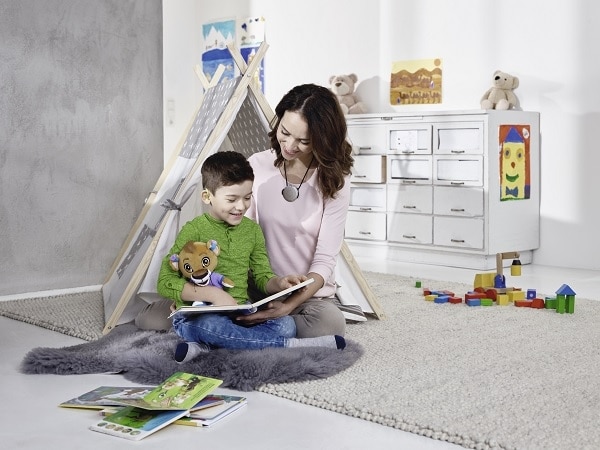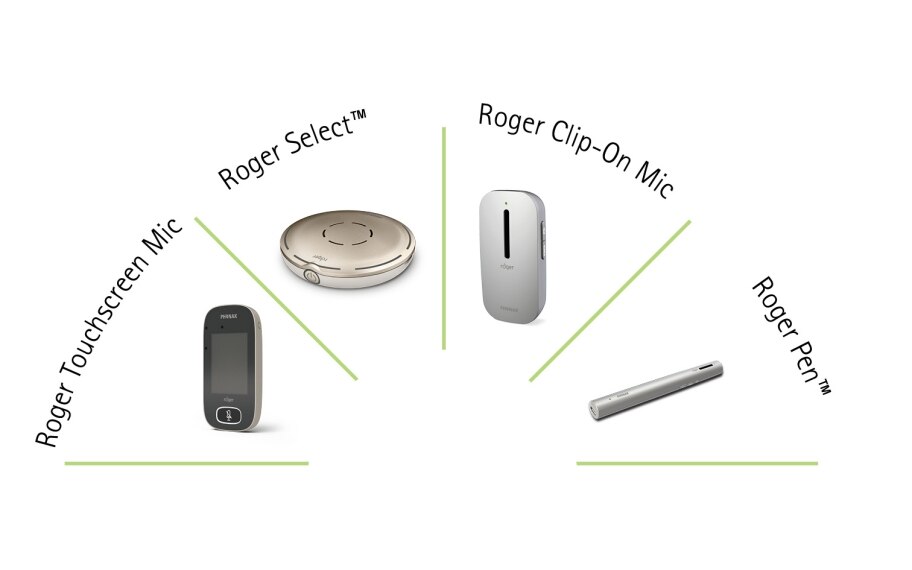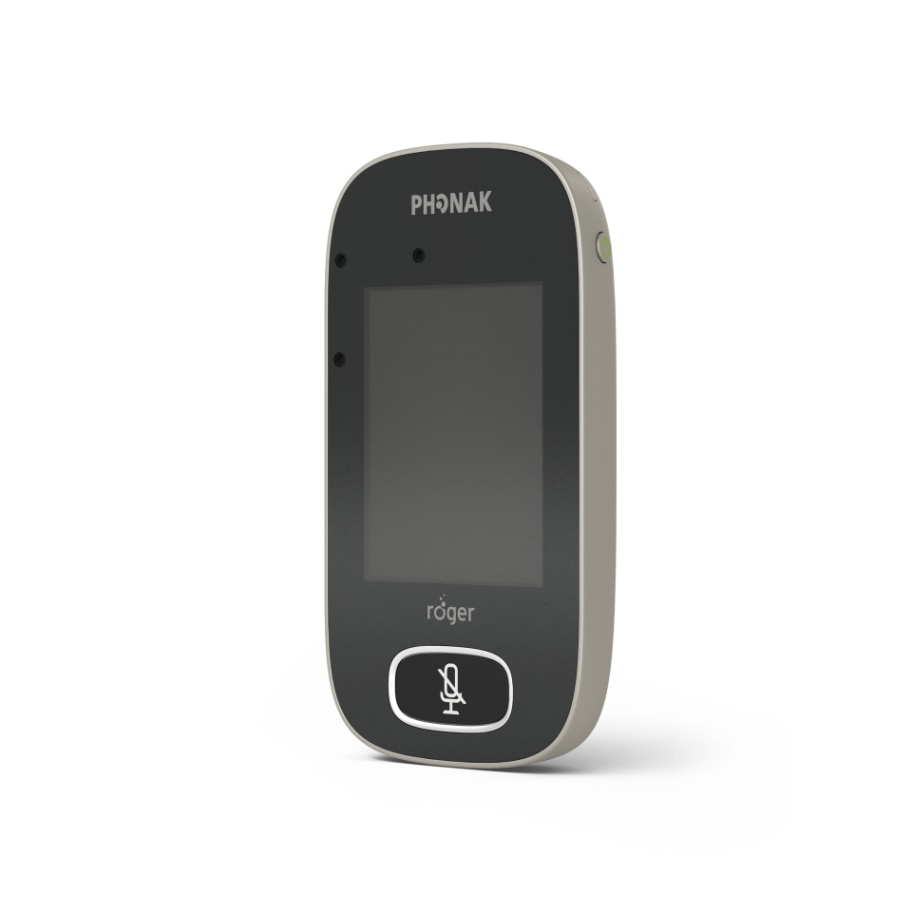
At Phonak, we understand that you want to offer your youngest patients and their families superior, easy-to-use technology that truly provides access to all the sounds and words needed for speech and language development.

Every word counts
We like to think of ears as being the ‘doorway to the brain’. For families who choose listening and spoken language as the mode of communication, it is important that these ‘doorways’ are fully opened with hearing technology so a child’s ability to learn to listen, talk and read is not hindered.1
- Accurately fit, consistently worn amplification, coupled with Roger and used in a language-rich environment can guard against language delays.2
- Roger use from the beginning can make a remarkable difference in reaching the 45 million words needed to be ready for school and litearcy learning.3
- Once mobile, children spend 42% of their day more than 2 meters (6 feet) from a parent or caregiver.4 Roger can help deliver clear sound over distance.
More speech, more responsiveness, less frustration
A recent study at Vanderbilt University demonstrated numerous benefits of using a Roger system at home with young children.5
- Use of a Roger system at home provided children with access to 5300 more words in an 8 hour day, compared to wearing hearing aids alone (this translates to a 42% increase in caregiver talk made available to a child).
- Based on parent responses, while using the Roger system, 80% of families reported greater responsivenesss and 35% reported less frustration in their children.
- When using a Roger system at home, parents speak more to their children from a distance, where accessing speech is difficult.

Easy listening with Roger
Roger is designed to make listening effortless for children by delivering clear speech directly to their hearing technology. Minimizing listening effort is important, especially when in noise and over distance.
- Even children with mild hearing loss are at risk of suffering from listening fatigue because of the increased effort needed to listen to those speaking to them.7 Symptoms include tiredness, sleepiness in the morning, inattentiveness, mood changes and learning challenges.7
- Children with severe and recurrent fatigue are less able to engage in daily activities, do poorer academically, have disrupted sleep patterns and report a decrease in quality of life.8
Roger connects children with loved ones
It is important that children feel connected to their constantly changing world. A Roger system can provide access to a parent’s or caregiver’s voice at a distance and in noise so they have confidence in every listening situation.
Whether sitting in the back seat of a car, running around a park or in a busy preschool, children will be connected to their caregivers.


Roger and wireless accessories
Compatible with virtually every hearing aid, cochlear implant and bone-anchored device, Roger is the ideal solution to provide young children access to more words as their worlds become noisier.
At Phonak, we design holistic solutions that perform together to provide children with the best access, near and far. Phonak Sky* hearing aids with the unique Roger and directional setting are proven to provide 26% improvement in speech understanding, compared to omni-directional setting.6
*Hearing aids with RogerDirect or Direct Audio Input (DAI)
Roger Touchscreen Mic

This exciting and easy to use wireless teacher microphone is the core component of the Roger for Education portfolio and gives students and teachers alike the opportunity...
References
1 Flexer, Carol (2018). The ears are doorways to the brain. Phonak Insight, retrieved from www.phonakpro.com/evidence, accessed May 23rd, 2018.
2 McCreery, R. W., Walker, E. A., Spratford, M., Bentler, R., Holte, L., Roush, P., … Moeller, M. P. (2015). Longitudinal Predictors of Aided Speech Audibility in Infants and Children. Ear and Hearing, 36, 24S–37S. https://doi.org/10.1097/AUD.0000000000000211
3 Hart, B. & Risley, T. (1995). Meaningful differences in the everyday experience of young American children. Baltimore, MD: Paul H. Brookes Publishing.
4 Mulla, I., & McCracken, W. (2014). Frequency modulation for preschoolers with hearing loss. Seminars in Hearing, 35(03), 206–216. https://doi.org/10.1055/s-0034-1383505
5 Benitez-Barrera, C..R, Angley G., & Tharpe, A.M. (2018). Remote microphone system use at home: Impact on caregiver talk. Journal of Speech, Language and Hearing Research, Vol. 61, 399-409. https://doi.org/10.1044/2017_JSLHR-H-17-0168
6 Jones, C., & Rakita, L. (2016). A powerful noise-fighting duo: RogerTM and Phonak directionality. Phonak Field Study News, retrieved from www.phonakpro.com/evidence, accessed May 23rd, 2018.
7 Hornsby, B.W. , Naylor, G., & Bess, F. H. (2016). A taxonomy of fatigue concepts and their relation to hearing loss. Ear and Hearing, 37 Suppl 1, e1-e10. https://doi.org/10.1097/AUD.0000000000000289
8 Garralda, M.E. & Rangel, L. (2002). Annotation: chronic fatigue syndrome in children and adolescents. Journal of Child Psychology and Psychiatry, 43 (2), 169-176. http://dx.doi.org/10.1111/1469-7610.00010
